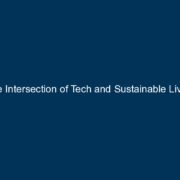Introduction
In the dynamic realm of technology, staying ahead of the curve requires continuous learning and adaptation. As we approach 2024, the demand for proficient programmers remains high, and certain programming languages are poised to play pivotal roles in shaping the future of software development. This blog serves as a guide for aspiring developers, highlighting the top programming languages to learn in 2024.
Python: A Versatile Powerhouse
Overview
Python continues to dominate the programming landscape due to its versatility and readability. Widely used in web development, data science, artificial intelligence, and automation, Python is an excellent starting point for beginners and a must-have skill for experienced developers.
Applications
- Web Development (Django, Flask)
- Data Science (Pandas, NumPy)
- Machine Learning (TensorFlow, PyTorch)
- Automation and Scripting
JavaScript: The Language of the Web
Overview
JavaScript remains essential for web development, powering dynamic and interactive user interfaces. With the rise of Single Page Applications (SPAs) and server-side frameworks like Node.js, JavaScript’s relevance extends beyond the browser.
Applications
- Front-End Development (React, Angular, Vue.js)
- Back-End Development (Node.js)
- Full-Stack Development
Rust: Empowering Systems Programming
Overview
Rust has gained popularity for system-level programming, combining high performance with memory safety. With its emphasis on preventing common programming errors, Rust is becoming a go-to language for building robust and secure systems.
Applications
- Systems Programming
- Game Development
- Network Services
Kotlin: Elevating Android Development
Overview
Kotlin has emerged as the preferred language for Android app development, offering concise syntax and seamless interoperability with Java. As Google’s official language for Android, Kotlin is a valuable skill for mobile app developers.
Applications
- Android App Development
- Server-Side Development (with Kotlin/JS or Kotlin/Native)
TypeScript: Enhancing JavaScript
Overview
TypeScript, a superset of JavaScript, introduces static typing to the language. It enhances code quality, improves developer productivity, and is widely adopted in large-scale web applications.
Applications
- Front-End Development
- Large-Scale Web Applications
- Integration with JavaScript Libraries
Golang (Go): Simplicity and Efficiency
Overview
Go, or Golang, is celebrated for its simplicity, efficiency, and strong support for concurrent programming. It is well-suited for building scalable and reliable backend services, making it a language of choice for cloud-native development.
Applications
- Backend Development
- Cloud-Native Applications
- Distributed Systems
Choosing the Right Language for You
Factors to Consider
- Project Goals: Consider the type of projects you want to work on.
- Community Support: A thriving community can provide valuable resources and support.
- Learning Curve: Evaluate the difficulty level based on your current skill set.
- Job Market: Research the demand for specific languages in your target job market.
Conclusion
As the technology landscape evolves, learning the right programming languages is a strategic decision for anyone aspiring to thrive in the field of software development. Whether you are a beginner taking your first steps or an experienced developer looking to expand your skill set, choosing the right programming languages in 2024 is critical.
Investing time in mastering these languages not only opens up diverse opportunities but also equips you with the tools to contribute to cutting-edge projects. The world of programming awaits those who are ready to embrace the challenges and innovations that lie ahead.



















Comments